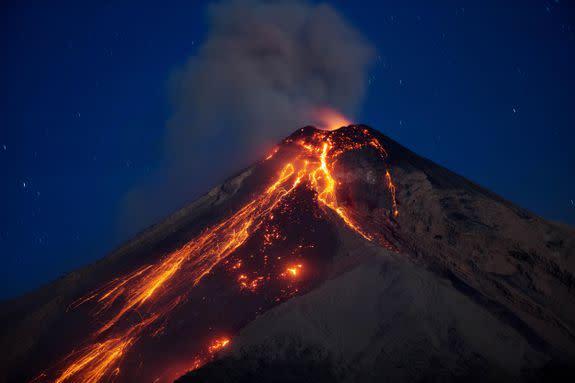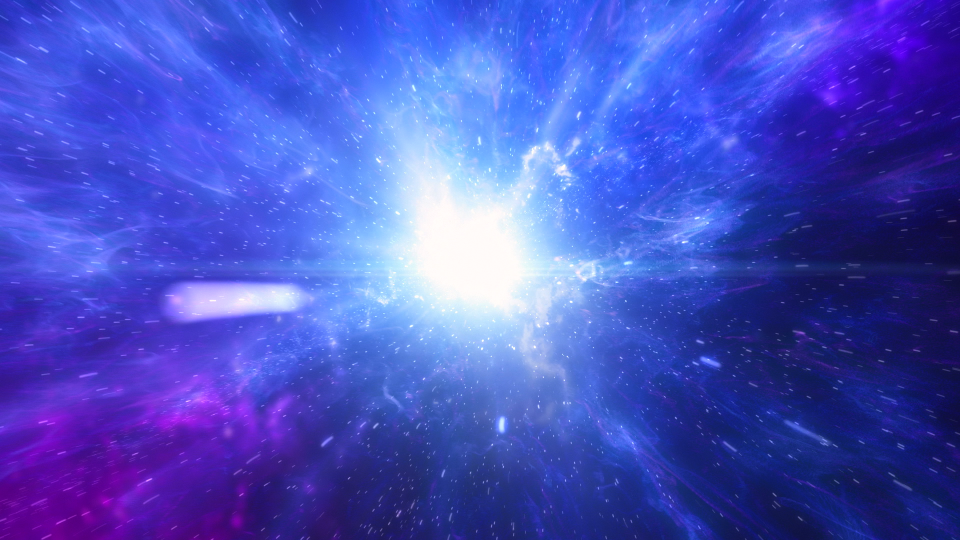Why Guatemala's volcano erupted in deadly avalanches, but Hawaii's hasn't

Guatemala's Volcán de Fuego — literally translated to the Volcano of Fire — can be a terrifying mountain.
On June 3, the volcano sent scorching avalanches of swiftly flowing volcanic debris, known as pyroclastic flows, down its flanks, which the Guatemalan government said has so far killed 25 people.
But this is nothing new for Volcán de Fuego.
SEE ALSO: Deep beneath the Pacific, another active Hawaiian volcano waits to emerge
In recorded history alone, the volcano has erupted more than 60 times, and when it does, it often produces these hot avalanches which — when large enough — can completely bury people and homes.
I can't stress this enough. This is a deadly eruption. Pyroclastic flows kill. This is an awful place to be, if you are ever around an erupting volcano like this and you see a cloud moving along the ground towards you, RUN. GET OUT OF THERE! https://t.co/Y5nDTaXKKf
— Dr Janine Krippner (@janinekrippner) June 4, 2018
"If you're in the path of a pyroclastic flow, you’re dead," volcanologist Jess Phoenix said in an interview. These flows can reach temperatures of 1,000 degrees Celsius (1,800 degrees Fahrenheit) and travel hundreds of miles per hour.
Pyroclastic flows, it should be noted, are completely different than lava flows. Lava flows are molten rock, often oozing like syrup, whereas pyroclastic flows are a hot mess of exploded magma that has rapidly hardened into a range of particles, from ashy volcanic dirt to large rocks.
They're also suffocating.
"Most people are asphyxiated — the dust clogs the throat," Stanley Mertzman, a volcanologist at Franklin and Marshall College, said in an interview.
"They simply can’t breath anymore."
Meanwhile, thousands of miles away, in Hawaii, the Big Island's Kilauea volcano has been spewing lava through neighborhoods for over a month now — but no one has died.
So, what's the difference?
Hawaii vs. Guatemala
Except for rare instances, Hawaiian volcanoes don't explode. And they simply aren't capable of producing such extremely fast, powerful pyroclastic flows, said Phoenix.
The reason why is Hawaii's magma — underground molten rock — is not as thick and gooey as that beneath explosive volcanoes like Volcán de Fuego, Mt. Saint Helens, or Mount Vesuvius, which are more formally known as stratovolcanoes.
#Guatemala • Esta es la aldea El Rodeo, #Escuintla y así quedó tras la caída de flujos piroclásticos que expulsó el volcán de Fuego. Fotos Julio Arriola. #DesastreVolcanDeFuego pic.twitter.com/Rnp8GGPkFF
— RBCNoticiasGT (@RBCNoticiasGT) June 3, 2018
Specifically, the magma feeding explosive volcanoes is richer in the ingredient silica, which makes it thicker.
"The higher the silica content, the greater the explosivity of the material," said Mertzman.
This magma brews deep underground, and becomes saturated with a variety of Earth's gases. In Hawaii, where lava oozes like syrup, the gases can easily escape.
But Fuego's molten rock rarely oozes. It's too thick. Instead, it traps gases for years or decades at a time. And when enough pressure builds, an explosion can occur — which is exactly what happened on June 3.
Sometimes, these explosions send plumes of ash miles into the sky.
But when the fragments are too heavy, like freshly exploded rocks and sand-like volcanic grains, "the gases and rocks start tumbling downhill," said Mertzman.

Image: ESTEBAN BIBA/EPA-EFE/REX/Shutterstock
"Fuego has pretty steep sides," said Phoenix. "It can build decent speed."
"There is no way a person could outrun a pyroclastic flow," she added.
The aftermath of these volcanic avalanches are extremely messy. The blasted material doesn't harden into masses of heavy, black rock, like on Hawaii. It's grainy and unconsolidated.
"It’s like digging into sand," said Mertzman.
So, what happens next?
It's never known exactly what will happen after a pyroclastic flow, but scientists will be measuring tremors in the area and other activity on the mountain to determine if the volcano might continue to erupt, or settle down.
"Is this the first part of a longer phase of eruptions, and will they get increasingly vigorous, or will it be quiet for a year or two?" asked Mertzman.
"We don’t know what the storyline is, but we know what the first chapter is."
The eruption of #FuegoVolcano in Guatemala via satellite imagery; image credit Scott Bachmeier https://t.co/qXaPZIxcJF pic.twitter.com/ASdfJ7KWi2
— Michael Ventrice (@MJVentrice) June 4, 2018
This first chapter was an explosive eruption, but nothing approximating the Roman eruption that destroyed Pompeii, or the Mount Saint Helens eruption in 1980.
This is because Fuego didn't erupt nearly enough volcanic material, said Janine Krippner, a volcanologist at Concord University's Department of Physical Sciences.
But based on historical president, the U.S. Geological Survey thinks future Fuego eruptions will result in pyroclastic flows that travel no more than 20 kilometers (12.4 miles) from the volcano.
But the situation isn't that simple. The avalanches can combine with water and rain to become muddy debris flows, called lahars, which historically inundate communities.
Unlike Hawaiian volcanoes, whose oozing lava flows shouldn't cause any deaths, the explosive nature of volcanoes like Fuego means that once an eruption begins, no one should be around.
"You never know how quickly it can turn bad," said Phoenix. "You got to get the hell out of there."
WATCH: Ever wonder how the universe might end?


